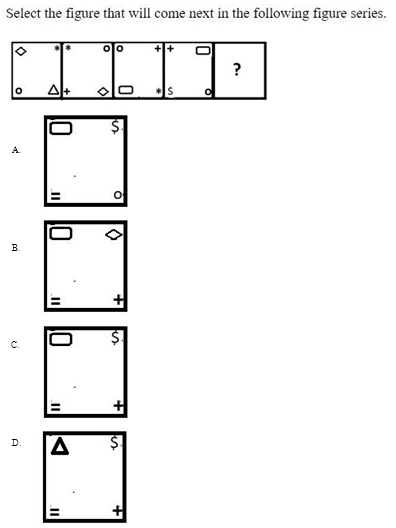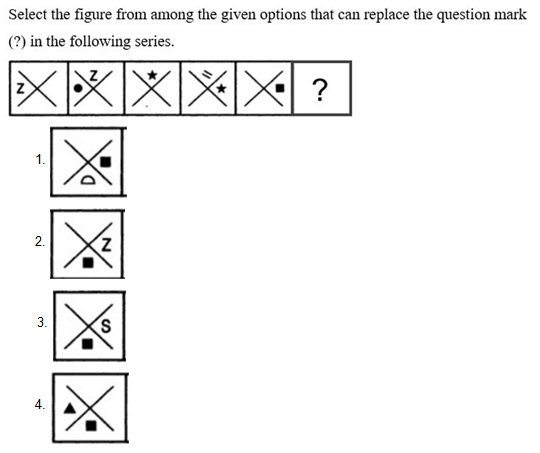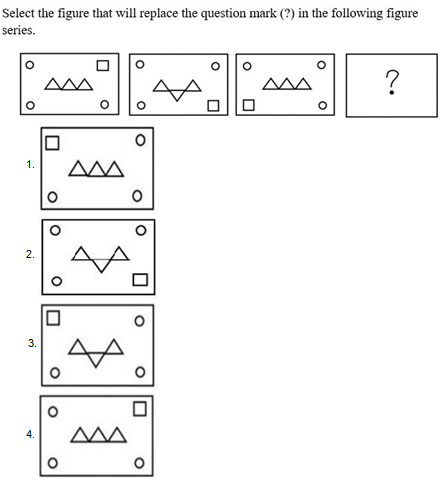Question
X, Y, and Z invested ₹1,20,000, ₹1,50,000, and
₹1,80,000, respectively, in a partnership business. The annual profit was ₹1,50,000. If X withdrew ₹20,000 after 6 months, what is X’s share of the profit?Solution
X's capital for the first 6 months = ₹1,20,000 X's capital for the next 6 months = ₹1,00,000 Y's and Z’s capitals remain constant. Effective capital of X = (1,20,000 × 6) + (1,00,000 × 6) = ₹1,32,000 Effective capital of Y = 1,50,000 × 12 = ₹18,00,000 Effective capital of Z = 1,80,000 × 12 = ₹21,60,000 Ratio of capitals = 1,32,000 : 18,00,000 : 21,60,000 = 11 : 150 : 180 X’s share of profit = (11/341) × 1,50,000 = ₹4,817.01 Correct Option: d)

Which of the given figures when placed in the 5th position would continue the series that is established by the first four figures?
Select the figure from the alternatives which will complete the pattern in given question figure.
Read the given statements and conclusions carefully. Assuming that the information given in the statements is true, even if it appears to be at varianc...
If the word 'EXAMINATION' is arranged in alphabetical order from the right end, then which of the following letter will be fourth letter to the right of...

Which figure should replace the question mark (?) if the series were to continue?


In each of the following questions, find out which of the answer figures can be formed from the pieces given in the problem figure.
Relevant for Exams:



